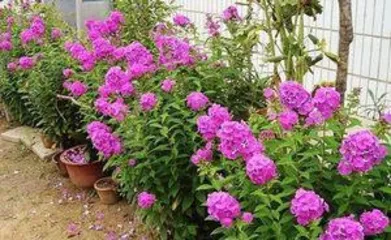Perennial flowers play an important role in landscaping. They can grow and bloom for many years, becoming an indispensable element in garden design. This article will introduce the types, growing environments, daily care, and propagation methods of perennial flowers, hoping to provide some useful references for flower enthusiasts.

I. Characteristics of Perennial Flowers
Perennial flowers refer to plants with long lifespans that can grow and bloom for many years. Compared to annual or biennial plants, perennial flowers are more durable and stable, able to survive and reproduce in relatively harsh environments. At the same time, perennial flowers have a longer blooming period and higher ornamental value.
II. Classification of Perennial Flowers
According to their morphology and habits, perennial flowers can be classified into various types such as herbaceous plants, shrubs, vines, and trees. Among them, herbaceous plants are the most common type of perennial flowers, such as morning glories, violets, and roses.

III. Suitable Growing Environment for Perennial Flowers
The requirements for the growing environment of perennial flowers are relatively relaxed. Generally, they need sufficient sunlight, suitable soil, and adequate water. At the same time, it is necessary to maintain good ventilation and drainage.
IV. Daily Care for Perennial Flowers
The daily care of perennial flowers mainly includes watering, fertilizing, pruning, and pest and disease control. In terms of watering, adjustments should be made according to different varieties and growing environments. For fertilization, it is necessary to control the amount and frequency of fertilization to avoid soil pollution from over-fertilization. In terms of pruning, appropriate pruning and shaping should be done according to the growth of the flowers. For pest and disease control, a combination of physical and chemical methods can be used to avoid adverse effects on the plants.
V. Propagation Methods for Perennial Flowers
The propagation methods for perennial flowers mainly include sowing, cuttings, division, grafting, and other methods. Different propagation methods are suitable for different varieties and growing environments and need to be selected and adjusted according to the actual situation.

VI. Application Scenarios for Perennial Flowers
Perennial flowers are widely used in various fields such as landscaping, garden design, and landscape planning. They can add a sense of hierarchy and dynamism to the garden, enrich the species and forms of plant communities, and create a better natural environment for people.
VII. Precautions for Perennial Flower Care
In the process of caring for perennial flowers, it is necessary to avoid excessive watering, fertilizing, and pruning. At the same time, attention should be paid to the prevention and control of pests and diseases to avoid adverse effects on the plants.
VIII. Recommended Varieties of Perennial Flowers
There are many varieties of perennial flowers. According to different ornamental requirements and growing environments, you can choose varieties suitable for your own planting and maintenance. Common varieties include roses, morning glories, violets, tulips, etc.
IX. Aesthetic Value of Perennial Flowers
Perennial flowers have an irreplaceable aesthetic value in landscaping. They can add a sense of hierarchy and dynamism to floriculture, enrich people's visual experience, and create a better natural environment for people.
X. Maintenance Tips for Perennial Flowers
In the maintenance of perennial flowers, it is necessary to pay attention to the appropriate amount and frequency of watering, choose the right fertilization method and time, avoid problems such as excessive pruning and pests and diseases, and ensure the healthy growth and flowering of the plants.
XI. Appreciation Tips for Perennial Flowers
When appreciating perennial flowers, you can feel their beauty by observing the color, shape, and fragrance of the flowers. At the same time, you also need to pay attention to environmental hygiene and personal safety.
XII. Cultivation Techniques for Perennial Flowers
When cultivating perennial flowers, it is necessary to pay attention to the selection of suitable soil and fertilizers, reasonable sowing time and propagation methods, and timely control of pests and diseases.
XIII. Greening Benefits of Perennial Flowers
Perennial flowers can improve the landscape quality and ecological environment of cities during urban greening and landscaping, promoting the sustainable development and ecological construction of cities.
XIV. Artistic Value of Perennial Flowers
Perennial flowers not only have aesthetic value but also artistic value. They can serve as important elements in garden design, creating a wonderful cultural atmosphere and aesthetic experience for people.
XV. Development Prospects of Perennial Flowers
As people's demands for urban greening and landscaping continue to increase, perennial flowers, as an important garden plant, have increasingly broad development prospects. In the future, we can look forward to perennial flowers playing a more important role in landscaping, creating a better natural environment for people.
Perennial flowers are one of the indispensable elements in garden design, able to grow and bloom for many years with higher ornamental value. When planting and maintaining perennial flowers, it is necessary to pay attention to suitable environments, daily care, and propagation methods to ensure the healthy growth and flowering of the plants. At the same time, perennial flowers have broad application value and development prospects in many fields such as landscaping, garden design, and landscape planning.